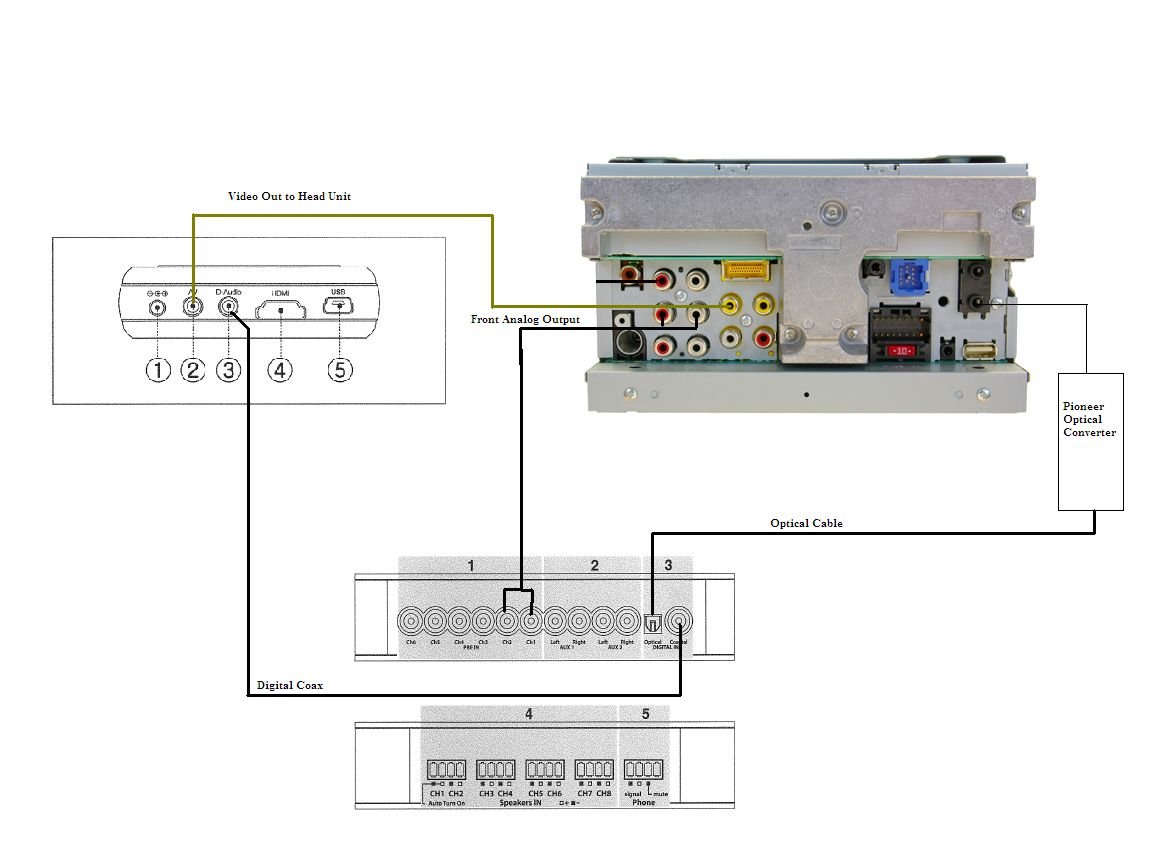Bit Ten
4 independent high-level channels with automatic summing capability
(not rca - it's a wire harness)
1 analog low-level stereo auxiliary input
1 high-level momentary audio interrupt input (with priority) on Phone Mute cable
Bit Ten D
Bit Ten inputs + 1 optical digital input
The BitOne and BitTen can definitely be compared and do share the DACs and processors. The Bit one is an amazing product as we all know, but the design team gathered information from shops around the world and chose to add another few products to the Bit line to better suit some needs.
The BitTen allows high or low level inputs, just like the BitOne, however it allows only 4 channels of input, not the 8 (6 if using low level) of the BitOne. Also these inputs are on a wire harness and not on their own little removable plugs. (The same harness is used for power, remote and Bluetooth inputs.) The inputs are automatically summed and de-equalized just like on the BitOne. The BitTen only allows one Aux input, the BitOne offers two. The reduced number of inputs will work in many vehicles where full range signals, or basic high pass/low pass signals are found. It will also work with aftermarket sources with either full range or front and sub inputs, still allowing the adjustment of sub level from the deck.
The BitTen has manual input level adjustments on each of the input channels, the BitOne is done automatically by the unit. Keep in mind, neither unit is a line driver like some processors on the market. Both units combine signals and output a signal equal to the level of the input.
The BitTen has 5 channels of assignable output compared to the BitOne's 8. A very large number of the BitOne systems were used as a two-way plus a sub (often with an Audison LRx5.1k), or less often in a front and rear high pass with a sub system. The BitTen will allow either setup to be used.
Many of the BitOne systems were designed not using the DRC, the small dash mounted controller. Many systems simply didn't have a need for a separate volume, fade, balance, or sub level controls or the ability to switch between different DSP settings or inputs. The BitTen does not come with the DRC to control these functions, but it CAN be added simply by plugging into the port on the BitTen. It is available as a separate part through Elettromedia.
As a side to the number of systems where the DRCs were not used, the DSP settings can not be switched by the user. The install crew would get the system set and the head unit's controls can still be used for basic audio adjustments, making it easier to get back to the known good sound field. The BitTen has 2 DSP settings, not the 4 settings available on the BitOne.
Unlike the BitOne, the BitTen offers an adjustable delayed turn on and turn off and a way to access the aux input without using the DRC.
Unlike the BitTen, the BitOne offers an eq curve for each aux input.
Both systems require the use of a PC to adjust the settings and sound field. There is different software for the different systems as well, and in all cases, the software is provided with the box. The BitTen software will work on a netbook without any modifications to the display settings, the BitOne software requires some basic registry editing to allow the software to fit on the screen.
The DSP portion is the same on both units with the exception of crossover slopes. The BitTen offers 6, 12, 18, and 24 db/octave slopes, the BitOne adds 30, 36, 42, and 48 db/octave slopes using Butterworth filtering. Using Linkwitz filtering changes the BitTen to 12 and 24, adding 36 and 48 with the BitOne.
For those interested in using a digital source, there will be a BitTen D available very soon. The BitTen D will add a toslink digital input to the BitTen features. Also, due to the nature of digital signals, the DRC is to be included with the BitTen D and needs to be used if the toslink input is used.
There is another benefit to the BitTen D if you use Audison Thesis amplifiers or the soon to be released Aidison Voce amplifiers with the optional digital input stage. If used with either of these amplifiers using the AC link and AD link, you get the same 8 channels of digital output that the BitOne offers. In these applications, the DRC actually controls the level of output at the amplifier through the AC link, as the AD link passes digital signals directly to the amplifiers.






 cá nhân em theo xu hướng của Nga , Bit bỏ !!
cá nhân em theo xu hướng của Nga , Bit bỏ !! 

